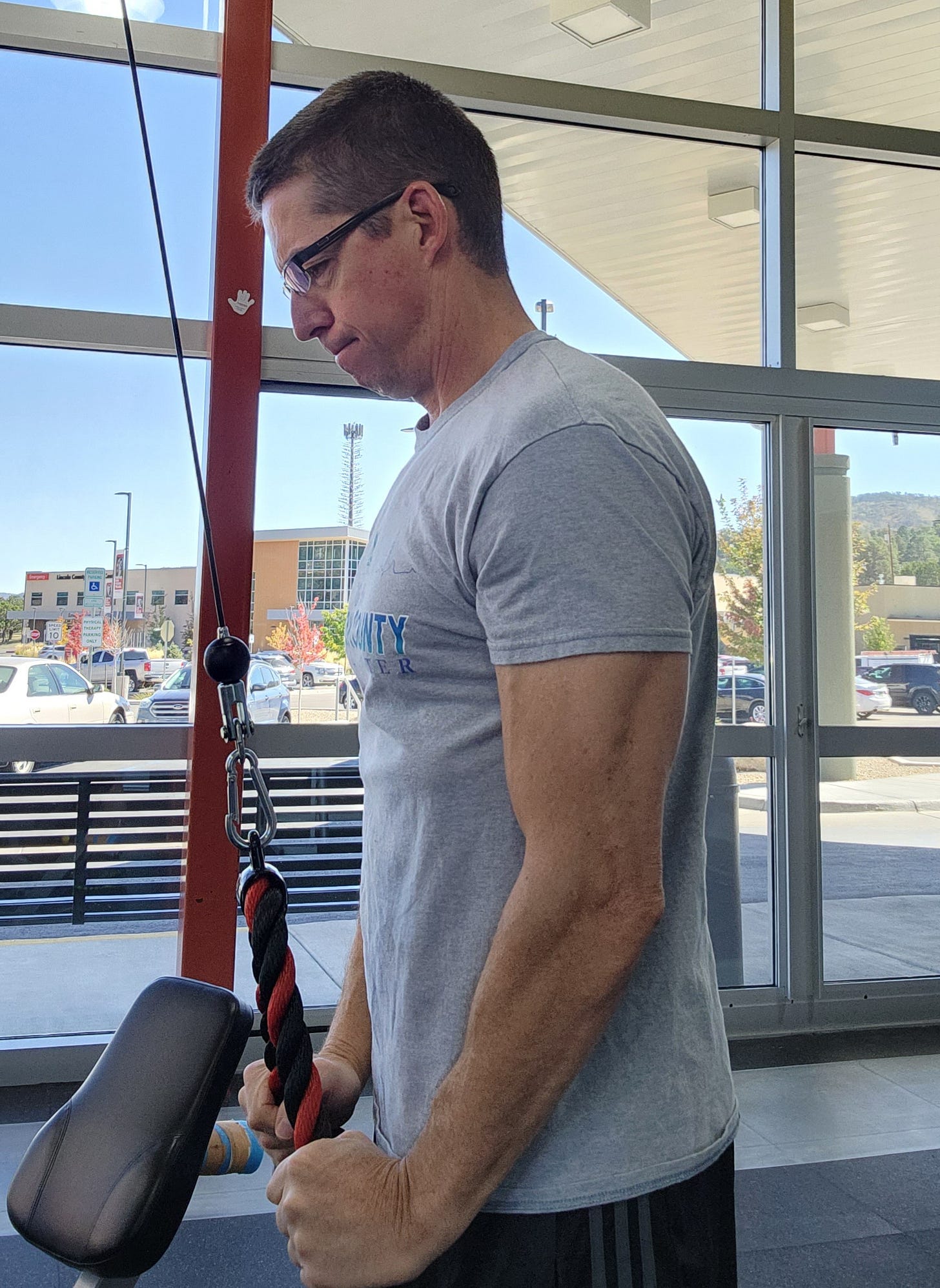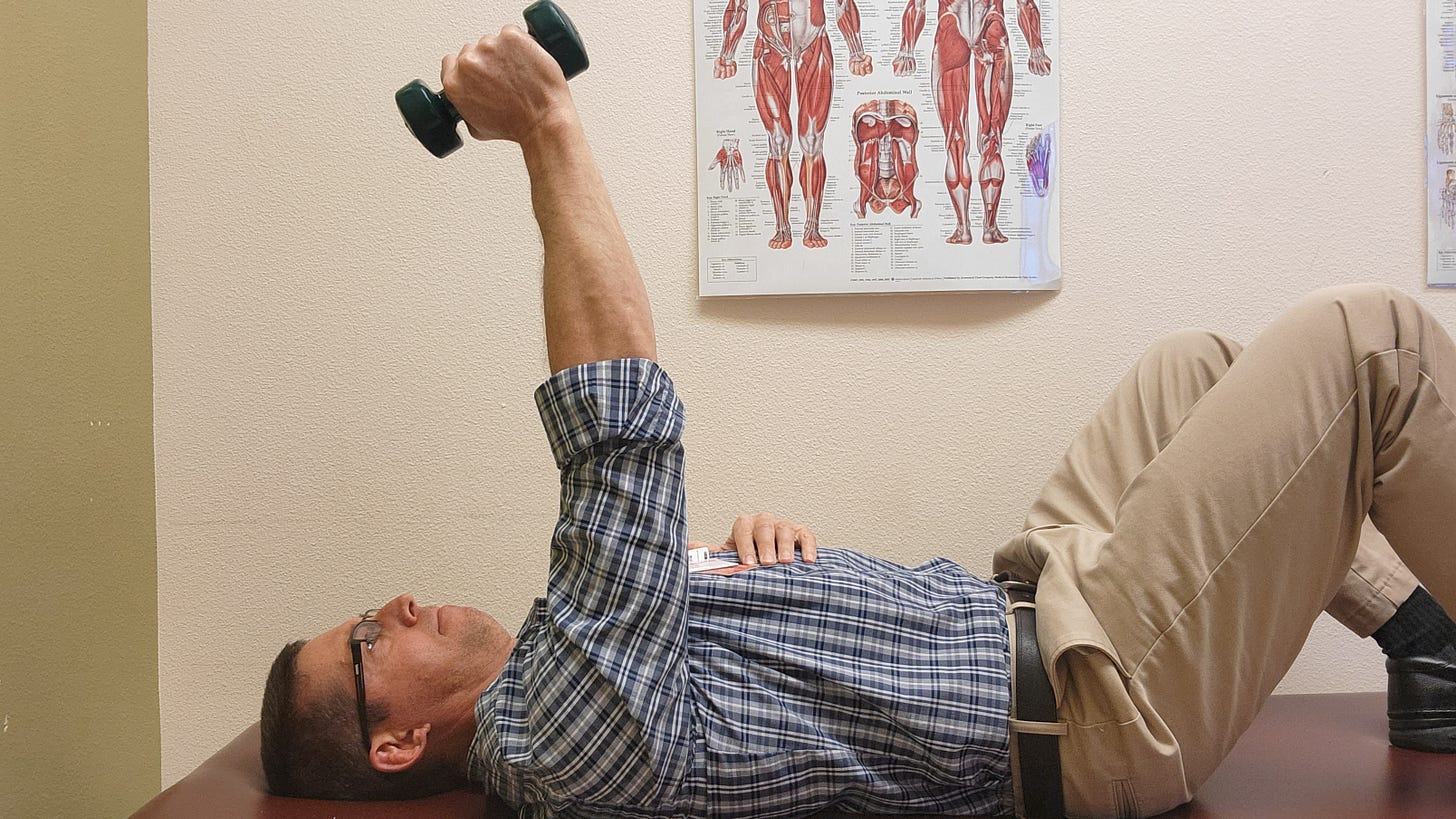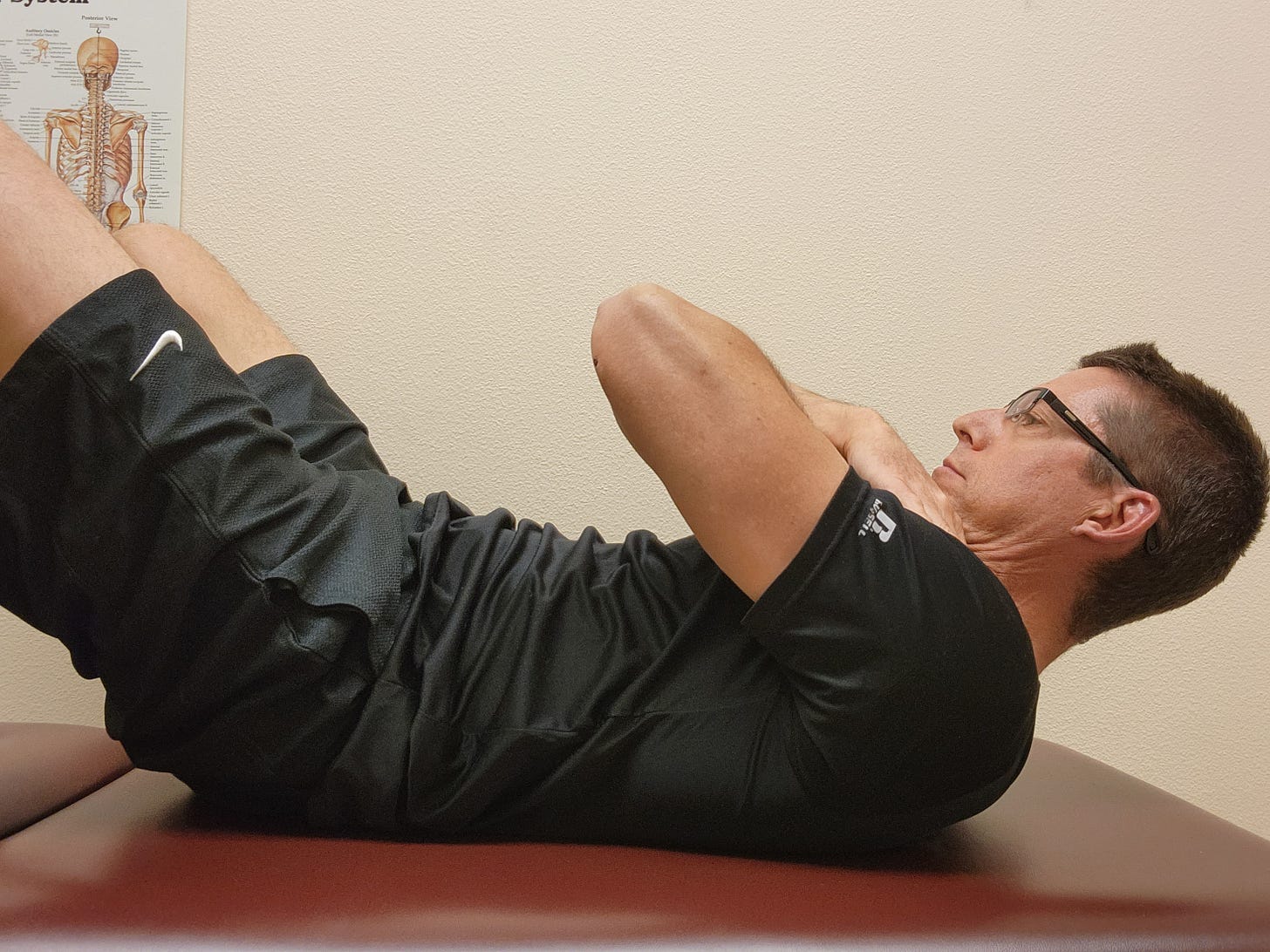This is not medical advice.
Short answer? Mostly no. But there are some other variables to consider.
I am frequently asked by women in therapy how they can rid of “the flab under their arms”, and that they don’t like the way it “blows in the wind.” (their words, not mine).
There are some fat deposits over our triceps (the muscle pictured above), however most of that mass is muscle. It hangs down because it’s not being used, and lacks “tone.”
You can work this at home using a rubber band over a door, same motion picture above. Or you can use a weight lying down at home, pictured below.
If we work a muscle, the brain, nervous and muscle tissue will realize that we need that muscle, and will maintain a certain amount of readiness and/or tone.
So working that muscle will help get rid of what appears to be fat hanging down. That’s a very specific exercises to that muscle. Sometimes we make better gains working a larger movement, like push ups against a counter top.

Spot burn
There is one book I read that suggested we can use local fat stores for local muscles, but when I tried to find the research they cited, I couldn’t find it. I tend to believe there is some truth to maybe 5-10%.
After seeing thousands of people for varying conditions, I have noticed a pattern. Rarely are things 100% this or that.
Take metabolism and muscle building. We don’t transition from 100% anabolic to 100% anaerobic. There is likely a gradient of percentages. It’s mostly aerobic after a certain time period.
We used to say you can’t spot burn fat, so don’t even bother with sit ups or crutches.
Now I’m thinking that some muscle strengthening might burn some local calories for energy, which would make sense. We have available fat sources “locally”. Maybe the body does use some of the locally sourced energy (fat).
There are many debates on weightlifting for weight loss in the health industry. One side will say gain muscle to burn fat.
That makes sense in theory, yet I have met many large people who aren’t losing body fat as they work harder.
My impression is that each of us has a unique metabolism. Stress also increases fat uptake, so sometimes we need to tailor a plan to each person.
I think the best way to know the correct answer is to commit to one theory of weight loss for 3-6 months, and measure results. You also have to be honest with yourself about your caloric intake. That’s the only way you will know for sure what works for you.
The big picture of fat loss
Eating less, and eating better is what makes the most difference in fat stores. Rarely can we out exercise a poor or excessive amount of calories.
Fat isn’t always evil either. Some people are too skinny, and benefit from extra energy stores.









Well I imagine a bit of spot reduction does happen, it's just not significant enough to make a huge difference.
The bingo wings...which I've been asked about too...women overall are far more sensitive to these kinds of effects. You really only see this in men who have had very significant weight loss and not always then.
The way women are wired with their subcutaneous bodyfat deposition, modern diet, lifestyle, and you add age on with changes in collagen you're down to a genetic lottery about what will eventually happen and at what point.